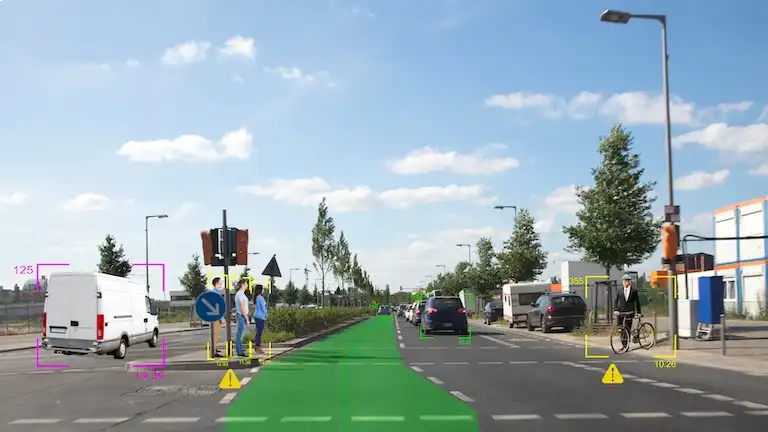Image segmentation is crucial for autonomous driving, enabling self-driving cars to accurately perceive and interpret their environment. This ensures the reliability and safety of these advanced automotive technologies.
Understanding Image Segmentation
Image segmentation is a machine recognition approach that divides an image into identifiable, meaningful sections or segments. These segments are then evaluated and grouped according to their particular characteristics. Image segmentation assists autonomous cars in identifying and distinguishing between numerous items in their environment, such as individuals, vehicles, road signs, and barriers. This level of understanding is necessary for making sound decisions.

Understanding Image Labeling
Images have a distinct language machines decode. Image labeling, adding meaning to each pixel, is key. Let’s uncover methods enabling AI to understand visuals.
Key Components of Image Segmentation in Autonomous Driving
Semantic segmentation entails categorizing each pixel in a picture to provide an in-depth understanding of the situation. Semantic segmentation is important in autonomous driving because it helps differentiate between distinct objects and their borders, which contributes to the vehicle’s perception system.
Instance segmentation advances semantic segmentation by differentiating individual instances of the same class. This function is critical for spotting several vehicles or pedestrians in close proximity, allowing the autonomous vehicle to travel safely through congested areas.
Lane Detection – Autonomous driving relies on the capacity to navigate inside designated lanes. Image segmentation algorithms are used to detect and outline lane lines, ensuring that the vehicle remains on its intended course.
Image segmentation helps accurately identify and classify items in the surroundings, such as vehicles, bicycles, pedestrians, and traffic signs. This data is critical for the decision-making processes of autonomous cars.
Benefits of Image Segmentation in Autonomous Driving
Enhanced Perception: The ability of autonomous cars to perceive, understand, and react to their environment in real time is greatly improved by image segmentation. This is especially important while negotiating intricate and changing traffic situations.
Increased Safety: The overall safety of autonomous driving systems is influenced by accurate image segmentation. Vehicles are able to prevent collisions and guarantee the safety of pedestrians and passengers by accurately detecting objects and obstacles.
Efficient Mapping: A key part of autonomous cars’ navigation systems is image segmentation. Even in difficult circumstances, the capacity to recognize lane markers, road limits, and other essential features guarantees quick and easy navigation.
Adaptability to Varying Environments: Autonomous cars can adjust to a variety of weather situations and environmental factors courtesy of image segmentation. Whether crossing cities settings, suburban regions, or rural routes, the technology offers a sturdy structure for dependable and steady operation.
Real-time Decision Making: Autonomous vehicles are able to make split-second decisions because of the speed and precision of image segmentation, which is essential for maintaining both safety and efficiency while driving.
Challenges
Although image segmentation has transformed autonomous driving, challenges with adverse weather, changing lighting conditions, and the computing difficulties involved in real-time segmentation still need to be solved. The goal of overcoming these obstacles and advancing technology is to increase the reliability and durability of autonomous driving systems through continued research and development.

Conclusion
In summary, one of the most important developments in the field of autonomous driving is image segmentation. Its capacity to offer a thorough and precise understanding of the surroundings of the vehicle is important for maintaining the effectiveness, safety, and adaptability of self-driving cars. Image segmentation will definitely be significant in influencing autonomous driving in the future and opening the door to a new wave of innovative transportation technology as the geographical region develops.

Image Segmentation Essentials
DeeLab Academy combines theoretical knowledge with hands-on exercises and examples, equipping participants to confidently apply their skills in professional settings.
DeeLab, a business unit of Tailjay, serves as a dynamic data annotation hub, connecting skilled annotators with AI projects. Our mission is to offer flexible and agile annotation services, nurturing collaboration with R&D teams and other industry players. Our vision is to drive AI innovation by delivering precise and dependable annotated data for various applications.





